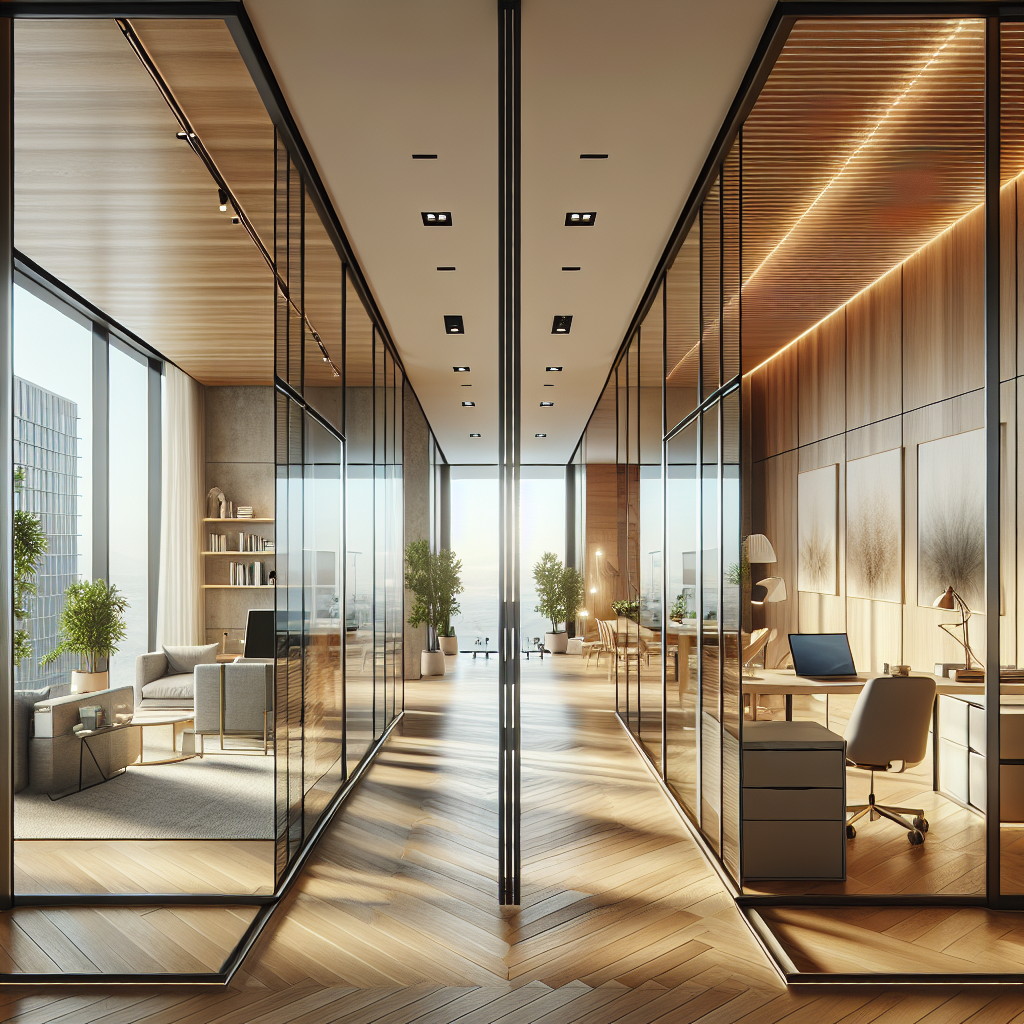Transformative Space: How Sliding Walls are Changing Interior Design

Transformative Space: The Evolution of Interior Design through Sliding Walls
The concept of transformative space has taken the world of interior design by storm, with sliding walls at the forefront of this revolutionary movement. Gone are the days when walls were mere static dividers; today, they are dynamic elements that redefine the way we interact with our living and working environments. The advent of sliding wall systems has introduced a new lexicon of flexibility, functionality, and aesthetic fluidity into the design narrative.
As we delve into the transformative potential of sliding walls, it is essential to recognize their multifaceted impact on contemporary architecture. These ingenious solutions cater to the increasing demand for versatile spaces that can effortlessly adapt to the ever-changing needs of their inhabitants. From minimalist abodes to bustling corporate offices, sliding walls are redefining spatial boundaries and offering a canvas for creative expression.
The Allure of Adaptive Spaces
Adaptive spaces are the new benchmark for high-end design, where the ability to transform a room’s function with a simple glide has become an invaluable asset. Sliding walls are the key to unlocking this adaptability, offering the power to alter the layout of a space with elegance and ease. The trend of open-plan living has found a versatile ally in sliding walls, allowing residents to switch between an expansive area for social gatherings and intimate nooks for personal retreats.
Design aficionados and architects alike are embracing the concept of fluid living, where the lines between different areas of a home or office are blurred, creating a seamless flow that enhances the user experience. This fluidity is not only practical but also resonates with the contemporary ethos of multifunctional spaces that cater to a myriad of activities and moods.
Technological Innovations in Sliding Wall Mechanisms
The technological advancements in sliding wall mechanisms have been pivotal in their rise to prominence within the design community. State-of-the-art track systems and automated controls have elevated the functionality of sliding walls, making them not just a design element but a feat of engineering. The integration of smart home technology allows for the automation of these walls, providing an effortless transition that can be controlled with the touch of a button or even voice commands.
Materials play a crucial role in the performance and aesthetics of sliding walls. Innovations in glass technology, such as smart glass that can switch from transparent to opaque, have opened up new possibilities for privacy and light control. Similarly, the use of sustainable materials aligns with the growing consciousness towards eco-friendly design, ensuring that sliding walls not only look good but also contribute to the well-being of the planet.
Maximizing Space with Sliding Walls
One of the most compelling advantages of sliding walls is their ability to maximize space. In urban environments where square footage is at a premium, these movable partitions provide a solution for creating multiple functional areas within a limited area. The clever use of sliding walls can transform a compact apartment into a multi-dimensional living experience, offering the illusion of a larger space without the need for physical expansion.
Moreover, sliding walls have become synonymous with modular design, where the adaptability of spaces is essential. By incorporating sliding walls, designers and homeowners can create rooms that can be reconfigured according to specific requirements, be it a home office by day that turns into a cozy bedroom by night, or a conference room that opens up to become part of a larger event space.
Enhancing Aesthetics with Customizable Options
The aesthetic appeal of sliding walls is undeniable, with a plethora of customizable options available to suit any design palette. From wooden finishes that exude warmth to sleek metal frames that scream modernity, there is a sliding wall to match every interior theme. The potential for personalization extends to the inclusion of artistic elements, such as etched patterns or bespoke artwork, turning these functional structures into striking focal points.
It is not just the visual impact that sliding walls have on a space; they also play a significant role in acoustics. High-quality sliding walls come equipped with soundproofing capabilities, ensuring that style does not come at the expense of privacy or comfort. This acoustic consideration is particularly crucial in environments like co-working spaces, where the balance between collaboration and concentration is key.
Case Studies: Sliding Walls in Action
Real-world applications of sliding walls provide a glimpse into their transformative power. Take, for instance, the adaptive reuse of historical buildings, where sliding walls have been employed to preserve the integrity of the structure while introducing modern functionality. In luxury residences, sliding walls have been used to create dynamic art galleries, where the walls move to reveal or conceal different pieces, offering an ever-changing visual experience.
In the realm of commercial design, sliding walls have proven to be a game-changer for innovative office design, where the need for both collaborative spaces and private pods can be met within the same footprint. The hospitality industry has also seen the benefits of sliding walls, with hotels and restaurants using them to create adaptable event spaces that can cater to both large functions and intimate gatherings.
Embracing the Future of Flexible Design
The integration of sliding walls into interior design is more than a trend; it is a reflection of a broader shift towards flexible and responsive environments. As we look to the future, the role of sliding walls in shaping our spaces is set to expand, with innovations in design and technology pushing the boundaries of what is possible. The potential for these transformative elements to enhance our quality of life and the efficiency of our spaces is immense, making sliding walls a cornerstone of modern design philosophy.
Whether it is through the creation of multi-functional spaces or the infusion of aesthetic versatility, sliding walls are here to stay. They are not just changing the face of interior design; they are redefining the very essence of how we live, work, and interact with our surroundings. As we continue to embrace the transformative power of sliding walls, we open the door to a world of endless possibilities where design knows no bounds.







